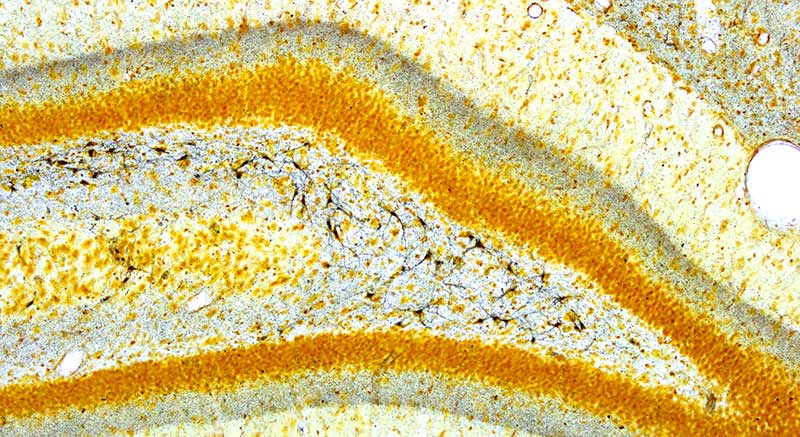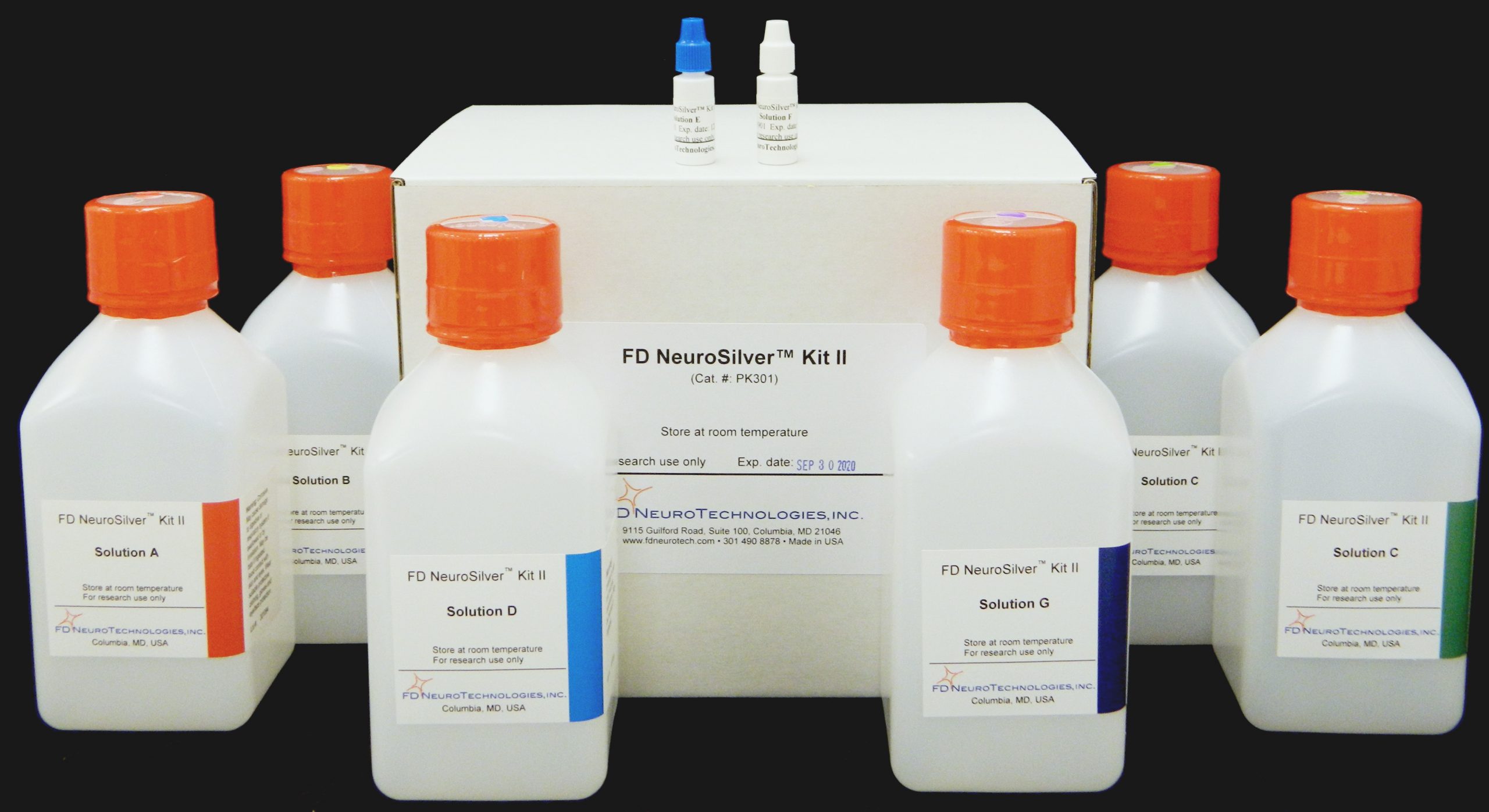FD NeuroSilver™ Kit II (small)
Description
FD NeuroSilver™ Kit II (small)
| Product Name | Catalog # | Size | Downloads | ||
| FD NeuroSilver™ Kit II (small) | PK301A | For 150 sections | |||
FD NeuroSilver™ Kit II is designed for the detection of degenerating neurons in fixed tissue sections of the central nervous system from experimental animals. The principle of this kit is based on the findings that some components of the neurons undergoing degeneration, such as lysosomes, axons, and terminals, become particularly argyrophilic. Under certain conditions, these cellular elements bind to the silver ions with high affinity. Upon reduction, the silver ions form metallic grains that are visible under a light or electron microscope.
FD NeuroSilver™ Kit II has been used widely in animal studies under various experimental conditions. This kit has proven extremely specific and sensitive for the detection of degenerating neuronal somata, axons, and terminals in both the brain and the spinal cord (cf. photo samples). It is particularly useful for the detection of small numbers of degenerating neurons that may not be demonstrable with routine histopathological techniques.
FD NeuroSilver™ Kit II has also been proven to be very sensitive and reliable for the detection of amyloid plaques in the brain of transgenic mice (cf. photo samples). In addition, this kit may be used for demonstrating neurodegeneration and/or amyloid plaques in tissue sections that have been processed for immunohistochemistry (cf. photo samples). The procedure of FD NeuroSilver™ Kit II takes approximately 1 hour.
Kit contents:
Solution A 250 ml
Solution B 250 ml
Solution C 250 ml x 2
Solution D 250 ml
Solution E 1 ml
Solution F 2 ml
Solution G (10X) 500 ml
Glass Specimen Retriever 2
Natural hair paintbrush 1
User Manual 1
Materials required but not included:
- Double distilled water
- Tissue culture plates (6-well)
- Histological supplies and equipment, including gelatin-coated microscope slides, glass coverslips, hair brush, staining jars, xylene or xylene substitutes and a light microscope.
Additional information
| Weight | 6.3 lbs |
|---|---|
| Dimensions | 10 × 10 × 10 in |


